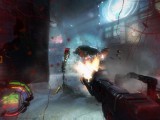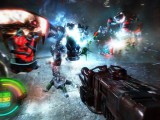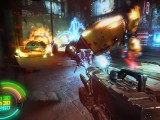Disclaimer: Blade Runner was not harmed in the writing of this review.
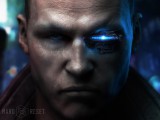 For those potentially coming fresh off Deus Ex: Human Revolution, the cyberpunk action-adventure of the moment (also included on our list of recent cyberpunk titles), Flying Wild Hog’s début throwback FPS Hard Reset might take some getting used to. After all, the game’s name could and should be taken in reference to its status as an earnest homage to “all those forgotten Dooms, Quakes, and Painkillers” 1)http://uk.gamespot.com/pc/action/hard-reset/news/6326099/hard-reset-qanda-whats-old-is-new-again?sid=6326099&mode=previews&tag=topslot;thumb;2.
For those potentially coming fresh off Deus Ex: Human Revolution, the cyberpunk action-adventure of the moment (also included on our list of recent cyberpunk titles), Flying Wild Hog’s début throwback FPS Hard Reset might take some getting used to. After all, the game’s name could and should be taken in reference to its status as an earnest homage to “all those forgotten Dooms, Quakes, and Painkillers” 1)http://uk.gamespot.com/pc/action/hard-reset/news/6326099/hard-reset-qanda-whats-old-is-new-again?sid=6326099&mode=previews&tag=topslot;thumb;2.
What the ex-members of CD Projekt RED, People Can Fly, City Interactive and Metropolis do is literally drop the you onto a dank, bleak futuristic alleyway, with barrels and crates strewn across the street, glowing power-ups beckoning. Efforts to interact with this architecturally impressive scene will prove much in vain, however, with items merely bumping, bouncing and rolling about; If you discover an explosive barrel or a glowing transformer, you can rest assured its only function is to act as a stationary tool for tactical destruction.
Stuff blows up. Big time. End of story?
Hard Looks
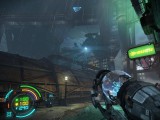 In its outstanding presentation, achieved with a tailor-made in-house engine called Road Hog, Hard Reset presents most importantly a functional façade. The environments are immaculately detailed and flesh out overtly familiar sights for any fan of cyberpunk: The city streets are grungy and gloomy, littered with machinery and debris. Above, a stunning skybox; a vast sprawling future city booming with electronic activity.
In its outstanding presentation, achieved with a tailor-made in-house engine called Road Hog, Hard Reset presents most importantly a functional façade. The environments are immaculately detailed and flesh out overtly familiar sights for any fan of cyberpunk: The city streets are grungy and gloomy, littered with machinery and debris. Above, a stunning skybox; a vast sprawling future city booming with electronic activity.
At ground level, there is plenty to take in, with dynamic neon lights, signs and electric blue arcs providing mood. In an interesting visual opposition, detail textures are high-resolution while generic world-building textures remain smudgier, illustrating the griminess of the surroundings. For a pure-bred corridor shooter, Hard Reset offers a surprising array of locations. As paradoxical as it sounds, the game’s otherwise generic hallways, streets and corridors remain engaging throughout – at the very least for the very generous 5-7 hours of play the game has on offer, perhaps thanks to the game’s solid aesthetic sense.
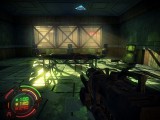 While players might not experience much of the city outside the designated corridor, they are certainly able to hear it: Terrific sound design is utilised just as much for combat and action as it is for world building. Interactive advertisements and vending machines are multi-purpose, serving not only as electrical conduits to snare enemies with, but also in creating a sense of place and belonging.
While players might not experience much of the city outside the designated corridor, they are certainly able to hear it: Terrific sound design is utilised just as much for combat and action as it is for world building. Interactive advertisements and vending machines are multi-purpose, serving not only as electrical conduits to snare enemies with, but also in creating a sense of place and belonging.
Patrolling hovercars whir past overhead, sirens blaring, with public service announcements imploring players not to vandalize public property (you will vandalize public property). The combat sounds are both heavy and meaty metallic, with satisfying *thunks* and *clanks* and *fizzles* of exploding machinery. In this way, the sound effects accentuate the physicality of Hard Reset’s combat, wherein robots topple over, skitter and crash all over the place. Explosions feel appropriately devastating.
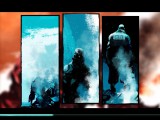 Excellent environmental music by Wojchiech Blazejczyk, ambient and atmospheric, plays in the background intermittently. Heavier, industrial-infused electronic beats are dropped in to heighten the intensity of combat while the more tonal and textural synths are reserved for the quieter moments.
Excellent environmental music by Wojchiech Blazejczyk, ambient and atmospheric, plays in the background intermittently. Heavier, industrial-infused electronic beats are dropped in to heighten the intensity of combat while the more tonal and textural synths are reserved for the quieter moments.
The Flash-animated motion comic cutscenes – clearly done on the cheap, but well enough – stylistically develop slightly as the game proceeds, from slightly tacky to relatively nice. In-game storyline exposition is achieved via radio transmissions, though the gravelly, foul-mouthed main character only speaks during these animated cutscenes. The voice acting itself hardly leaves a lasting impression.
Hard Restart
Old is the new new. Hard Reset inhabits the kind of standard cyberpunkian fare where corporations rule the day, personalities are digital and rogue robotniks are rolling and hating on the streets. Players fill in the shoes of the good Major Whatshisname, working as robot enforcer for yet another Corporation – with a capital C, right? Right! – and nothing, dear readers and players, is ever as it seems.
The names, the faces and the places – Bezoar City, Sector 6, CLN-16, that sort of random thing – are certainly there, but frankly, the game’s exposition is a disjointed, comedic, and often simply nonsensical mess, its dialogic substance formed mostly of curse words and detached technobabble. (Once Greek mythology gets dropped in, one cannot but smile. It’s all very silly, yes, but also curiously endearing.)
“Bezoar this, Sector that” is all pretty much beside the point, though: After all, there are plenty enough bright neon lights and signs, shady streets and exploding robots; that’s as elementary and as visceral a cyberpunk gaming experience as it gets. Klaudiusz Zych in fact states in interview that “[The plot]’s not something you have to pay attention to if you don’t want to – you could just storm through the levels.” 2)http://beefjack.com/features/hard-reset-preview-pc/
You can indeed clickety-click through cutscenes as soon as the game is done loading the subsequent level. “It’s a shooter, who cares about story!” Some context, a looming MacGuffin, is all you need to kick some shiny ass metal butt. But an uncomfortable feeling lingers, a regret that emerges from this collision of beautiful sight and sound in comparison to the lack of substantial narrative, with the knowledge of merely going through the motions, passing through these corridors and arenas, never once truly connecting on a more sophisticated level with this admittedly fascinating and visionary place.
Despite its obvious narrative failings, Hard Reset does nevertheless create a terrific sense of “being there” given the richness of the world and the physicality of the combat. Sense, it never once makes. It doesn’t… have to?
Hard Shoot
Precognition, shooting experience and luck. These three dimensions play the largest part in the action, which proceeds with minimal bouts of exploration interspersed with waves… and waves… and waves of enemies. Any one battle, poorly anticipated or assessed, can and will result in getting sandwiched and/or cornered. Individually, enemies are seldom very tough, but especially the very first attempt at each major fight can be a tough pill to swallow.
Combative situations are foreshadowed in several ways; there will often be an upgrade station waiting, a closed door to be opened or an electronic shield turned off, and exploding barrels and machines shining in the distance. Often there will also be something intriguing going on in the distance, a little robot scurrying ahead, signalling an imminent encounter. On the “Normal” difficulty, the game is very manageable, (This is why there also exist “Hard” and “Insane” modes.) and indeed many of the rocket-spraying, forward-dashing robots can be avoided with a rudimentary understanding of positioning and circle-strafing, and obviously the streets the are littered with highly necessary environmental elements for electrocuting and blasting the enemies. You can and must create traps with stasis fields, slowing down the advancing onslaught.
Tactical positioning and planning do play a major part in the very biggest of the shoot-outs. Less useful for the player’s survival is a comically short-lived dash, which is often barely enough to get away from enemies, and more often still a fine dandy way of getting caught up in the environmental rubble, a trash bin, a protruding fence, or worst case scenario, an exploding barrel. Bang! Reload. Admittedly, a prolonged run key would have made the game all that much easier. Crouching is not included.
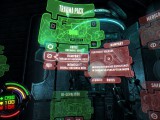 The lavish suite of weapons available consists of two main categories, projectile and energy -based. The two guns, initially an assault rifle and a plasma blaster, neatly transform into the different weapon subtypes, such as a shotgun, a grenade launcher or the compulsory RPG. The upgrade route is altogether familiar and very much resembles that of the Power to the People stations in BioShock. Shooting does have an extra dimension to it, as the forever forward-dashing enemies have to be held at a distance. Many of the weapons have an unlockable secondary fire for this very purpose, and sometimes switching weapons for such defense is key to your survival.
The lavish suite of weapons available consists of two main categories, projectile and energy -based. The two guns, initially an assault rifle and a plasma blaster, neatly transform into the different weapon subtypes, such as a shotgun, a grenade launcher or the compulsory RPG. The upgrade route is altogether familiar and very much resembles that of the Power to the People stations in BioShock. Shooting does have an extra dimension to it, as the forever forward-dashing enemies have to be held at a distance. Many of the weapons have an unlockable secondary fire for this very purpose, and sometimes switching weapons for such defense is key to your survival.
Switching between the subtypes as well as the categories is slow and cumbersome, and often the game is reliant on planning out your each weapon switch beforehand. The switcher also does not loop, instead scrolling back and forth only, which is absolutely an added headache in the heat of battle, especially as the different modes of either weapon are hard to differentiate visually. The game will also fail to register some of your switches and changes, and especially the bigger, more explosive weapons take extremely long to reload or re-energize.
Each these weapons – as well as defensive measures – can be unlocked and upgraded once you discover and amass enough experience pickups, improving them or adding features. As these are littered, for the most part, in the scenery, the game very much rewards a little bit of old-fashioned exploration. Those willing to seek out secret areas will be vastly better-equipped.
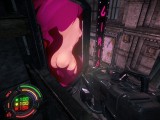 The developers make much noise of the engine’s capabilities for havo… Havok, having tailor-made “the Road Hog engine for the kind of game that [the team] wanted to make” 3)http://www.pcgamer.com/2011/08/08/interview%E2%80%94hard-reset-dev-on-call-of-duty-cyberpunk-deus-ex-pc-exclusivity/. Indeed, the Hog manages to create a nice enough illusion of destructibility and mayhem even though realistically speaking not all that much gets blown up; beyond a few utterly, beautifully destructible sequences interspersed among the game’s more ordinary scenes, what the Road Hog, a powerful little steam engine if any, does very well to cover this fact up.
The developers make much noise of the engine’s capabilities for havo… Havok, having tailor-made “the Road Hog engine for the kind of game that [the team] wanted to make” 3)http://www.pcgamer.com/2011/08/08/interview%E2%80%94hard-reset-dev-on-call-of-duty-cyberpunk-deus-ex-pc-exclusivity/. Indeed, the Hog manages to create a nice enough illusion of destructibility and mayhem even though realistically speaking not all that much gets blown up; beyond a few utterly, beautifully destructible sequences interspersed among the game’s more ordinary scenes, what the Road Hog, a powerful little steam engine if any, does very well to cover this fact up.
Upgrade management as well as general terminal usage are self-contained in the game world a lá Dead Space or Doom 3. The decision not to break the ludic experience with yet another tacked-on interface is a great way of preserving and even enhancing immersion, as the terminals are tactfully made. What does potentially break immersion, however, is a constant battery of holographic backsides plastered over the landscape.
Hard Rest
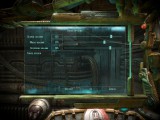 Hard Reset’s PC exclusivity surely denotes no “Press Start” in the menu, right? Right. In addition to its robust configuration options, ranging from controlling input lag, changing cutscene volume (Wow!) and utilizing a gamepad (though who would, right?), you can also designate a specific monitor to play on in your hardcore dual-, triple- and quadruple monitor get-ups. In addition, the game’s performance is top-notch even on a more modest rig 4)Athlon 64 X2 5200+, nVIDIA GeForce 460 GTX 1GB, and 2GB RAM, as Hard Reset performs extremely well even on the highest ‘Ultra’ settings, hovering between 40-60 FPS during most scenes. In the most chaotic of moments it drops right down to sub-20, but the game remains playable even if one doesn’t have the heart to change a thing for those few rare occasions. On a slightly newer system 5)AMD Phenom 9950 Black Ed, GTX 460 GLH, 4GB RAM the game slowed down only in the two most demanding scenes and remained playable throughout. The only knock on the engine is that pretty as it is (see image on the left), its stylish and animated main menu is dreadfully slow to navigate with each click taking some seconds too many. Fortunately, the developers have listened to player feedback and have included a “fast menu” option in a recent 175mb patch.
Hard Reset’s PC exclusivity surely denotes no “Press Start” in the menu, right? Right. In addition to its robust configuration options, ranging from controlling input lag, changing cutscene volume (Wow!) and utilizing a gamepad (though who would, right?), you can also designate a specific monitor to play on in your hardcore dual-, triple- and quadruple monitor get-ups. In addition, the game’s performance is top-notch even on a more modest rig 4)Athlon 64 X2 5200+, nVIDIA GeForce 460 GTX 1GB, and 2GB RAM, as Hard Reset performs extremely well even on the highest ‘Ultra’ settings, hovering between 40-60 FPS during most scenes. In the most chaotic of moments it drops right down to sub-20, but the game remains playable even if one doesn’t have the heart to change a thing for those few rare occasions. On a slightly newer system 5)AMD Phenom 9950 Black Ed, GTX 460 GLH, 4GB RAM the game slowed down only in the two most demanding scenes and remained playable throughout. The only knock on the engine is that pretty as it is (see image on the left), its stylish and animated main menu is dreadfully slow to navigate with each click taking some seconds too many. Fortunately, the developers have listened to player feedback and have included a “fast menu” option in a recent 175mb patch.
Worst for last: As most of you have heard by now, Hard Reset does not contain a save game function (unless you delve deep into the game’s configuration files to bind the quicksave, which does supposedly exist, but is unbound and unadvertised). Instead, checkpoints. CHECKPOINTS. CHECKPOINTS. Let it be in bold. Strangely enough, checkpoint ‘saves’ can be loaded at will, but actual saving is not possible.
As up in the arms as I am about this (in principle! PC players are above all wo/men of principle!), the checkpoints are fairly well-sprinkled out and are not so much an issue as they are an annoyance. But just one single problem with loading and/or saving can nevertheless have a devastating effect on progress. For instance, after crashing to desktop after nearly completing an end-level battle, I found myself set back three big fights and some fifteen, twenty minutes of play. Fortunately for me, the game had just loaded the wrong checkpoint, but what of other players facing similar situations?
As with many indie games – intriguingly, the game followed an all-new fast-track promotional style by Evolve PR, whom also supplied The Slowdown with a review copy – there was minor worry that Hard Reset might not quite reach its proper bloom over the course of its modest length. This fear is and was, for the most part, unfounded. Though the game definitely stays the course throughout, the difficulty level offers a fine curve; while players will quickly learn the ropes, the game never becomes a repetitive experience thanks to the broad array of weapons and environments available. Larger-than-life surprises are not to be found here, but essentially, the game is well-paced and -structured. If you’re thinking Drug Wars (or Merchants of Brooklyn, as the game was called), you shouldn’t.
The game also has achievements, of course – all 80 of them – which cover both natural progression and additional challenges. Flying Wild Hog’s Hard Reset is available on Steam today; a demo can also be downloaded right now.
References
| 1. | ↑ | http://uk.gamespot.com/pc/action/hard-reset/news/6326099/hard-reset-qanda-whats-old-is-new-again?sid=6326099&mode=previews&tag=topslot;thumb;2 |
| 2. | ↑ | http://beefjack.com/features/hard-reset-preview-pc/ |
| 3. | ↑ | http://www.pcgamer.com/2011/08/08/interview%E2%80%94hard-reset-dev-on-call-of-duty-cyberpunk-deus-ex-pc-exclusivity/ |
| 4. | ↑ | Athlon 64 X2 5200+, nVIDIA GeForce 460 GTX 1GB, and 2GB RAM |
| 5. | ↑ | AMD Phenom 9950 Black Ed, GTX 460 GLH, 4GB RAM |
